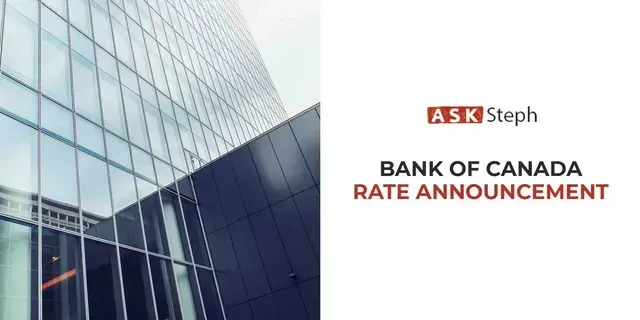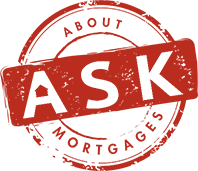Will a Temporary Loss of Income Impact Your Mortgage Post-COVID-19?
Stephanie Barritt • September 30, 2020

While unemployment peaked over 13% at the onset, it's hard to quantify just how many Canadians had some form of a reduction in their income over the last year. Especially if you're self-employed or your income varies year to year because you receive a bonus, pick up shifts, freelance, or you earn income that isn't guaranteed.
If you earn variable income, and you've seen a reduction in income because of the pandemic, this has the potential to impact how much mortgage you qualify for up to the next three years.
Here's why. For income that isn't guaranteed, when assessing your mortgage application, most of the time, lenders will look at a 2-year average. So let's say you're looking to secure a mortgage now in 2020, the lender will want to see documentation proving what you earned in 2018 and 2019, and they will take a 2-year average.
If your income is lower in 2020 because of the pandemic, once we come to tax time in 2021, your 2-year average will now include that reduction in revenue for the next couple of years, even if you are back to making what you did pre-pandemic. It will be the same case in 2022 (and into 2023), as any lender will want to see your 2-year average between 2020 and 2021. Less income in 2020 could mean qualifying for a lower mortgage amount over the next few years.
The advantage of working with an independent mortgage professional is the ability we have to represent you to several lenders who all offer different products and have different guidelines. So while one lender might be hard and fast on the 2-year average, depending on your industry, another lender might make an exception.
Additionally, depending on where the housing market is at and how much the economy has rebounded in 2021, lenders might consider COVID-19 and be flexible or implement amended guidelines. However, we will have to wait and see on that. But for the most part, if your income is lower because of COVID, it will impact you going forward, feel free to get in touch if you have any questions or hear anything in the news that you'd like clarified.
So what can you do about this today? Well, if you're currently looking to purchase a property or you have a mortgage that's almost up for renewal, or if you'd like to refinance before 2021, it's definitely in your best interest to talk with an independent mortgage professional about all your options as soon as possible.
Alternatively, if you're not looking to secure a mortgage right now, it's always a good idea to have a plan in place for when you do. It never hurts to plan ahead, especially when you have time and can make up some of the lost income with additional income in the future.
If you'd like to discuss your financial situation and see exactly how your income impacts your mortgage qualification, please don't hesitate to contact me anytime, I would love to work through everything with you!
RECENT POSTS

Bank of Canada maintains policy rate at 2.1/4%. FOR IMMEDIATE RELEASE Media Relations Ottawa, Ontario December 10, 2025 The Bank of Canada today held its target for the overnight rate at 2.25%, with the Bank Rate at 2.5% and the deposit rate at 2.20%. Major economies around the world continue to show resilience to US trade protectionism, but uncertainty is still high. In the United States, economic growth is being supported by strong consumption and a surge in AI investment. The US government shutdown caused volatility in quarterly growth and delayed the release of some key economic data. Tariffs are causing some upward pressure on US inflation. In the euro area, economic growth has been stronger than expected, with the services sector showing particular resilience. In China, soft domestic demand, including more weakness in the housing market, is weighing on growth. Global financial conditions, oil prices, and the Canadian dollar are all roughly unchanged since the Bank’s October Monetary Policy Report (MPR). Canada’s economy grew by a surprisingly strong 2.6% in the third quarter, even as final domestic demand was flat. The increase in GDP largely reflected volatility in trade. The Bank expects final domestic demand will grow in the fourth quarter, but with an anticipated decline in net exports, GDP will likely be weak. Growth is forecast to pick up in 2026, although uncertainty remains high and large swings in trade may continue to cause quarterly volatility. Canada’s labour market is showing some signs of improvement. Employment has shown solid gains in the past three months and the unemployment rate declined to 6.5% in November. Nevertheless, job markets in trade-sensitive sectors remain weak and economy-wide hiring intentions continue to be subdued. CPI inflation slowed to 2.2% in October, as gasoline prices fell and food prices rose more slowly. CPI inflation has been close to the 2% target for more than a year, while measures of core inflation remain in the range of 2½% to 3%. The Bank assesses that underlying inflation is still around 2½%. In the near term, CPI inflation is likely to be higher due to the effects of last year’s GST/HST holiday on the prices of some goods and services. Looking through this choppiness, the Bank expects ongoing economic slack to roughly offset cost pressures associated with the reconfiguration of trade, keeping CPI inflation close to the 2% target. If inflation and economic activity evolve broadly in line with the October projection, Governing Council sees the current policy rate at about the right level to keep inflation close to 2% while helping the economy through this period of structural adjustment. Uncertainty remains elevated. If the outlook changes, we are prepared to respond. The Bank is focused on ensuring that Canadians continue to have confidence in price stability through this period of global upheaval. Information note The next scheduled date for announcing the overnight rate target is January 28, 2026. The Bank’s next MPR will be released at the same time.

Wondering If Now’s the Right Time to Buy a Home? Start With These Questions Instead. Whether you're looking to buy your first home, move into something bigger, downsize, or find that perfect place to retire, it’s normal to feel unsure—especially with all the noise in the news about the economy and the housing market. The truth is, even in the most stable times, predicting the “perfect” time to buy a home is incredibly hard. The market will always have its ups and downs, and the headlines will never give you the full story. So instead of trying to time the market, here’s a different approach: Focus on your personal readiness—because that’s what truly matters. Here are some key questions to reflect on that can help bring clarity: Would owning a home right now put me in a stronger financial position in the long run? Can I comfortably afford a mortgage while maintaining the lifestyle I want? Is my job or income stable enough to support a new home? Do I have enough saved for a down payment, closing costs, and a little buffer? How long do I plan to stay in the property? If I had to sell earlier than planned, would I be financially okay? Will buying a home now support my long-term goals? Am I ready because I want to buy, or because I feel pressure to act quickly? Am I hesitating because of market fears, or do I have legitimate concerns? These are personal questions, not market ones—and that’s the point. The economy might change tomorrow, but your answers today can guide you toward a decision that actually fits your life. Here’s How I Can Help Buying a home doesn’t have to be stressful when you have a plan and someone to guide you through it. If you want to explore your options, talk through your goals, or just get a better sense of what’s possible, I’m here to help. The best place to start? A mortgage pre-approval . It’s free, it doesn’t lock you into anything, and it gives you a clear picture of what you can afford—so you can move forward with confidence, whether that means buying now or waiting. You don’t have to figure this out alone. If you’re curious, let’s talk. Together, we can map out a homebuying plan that works for you.



